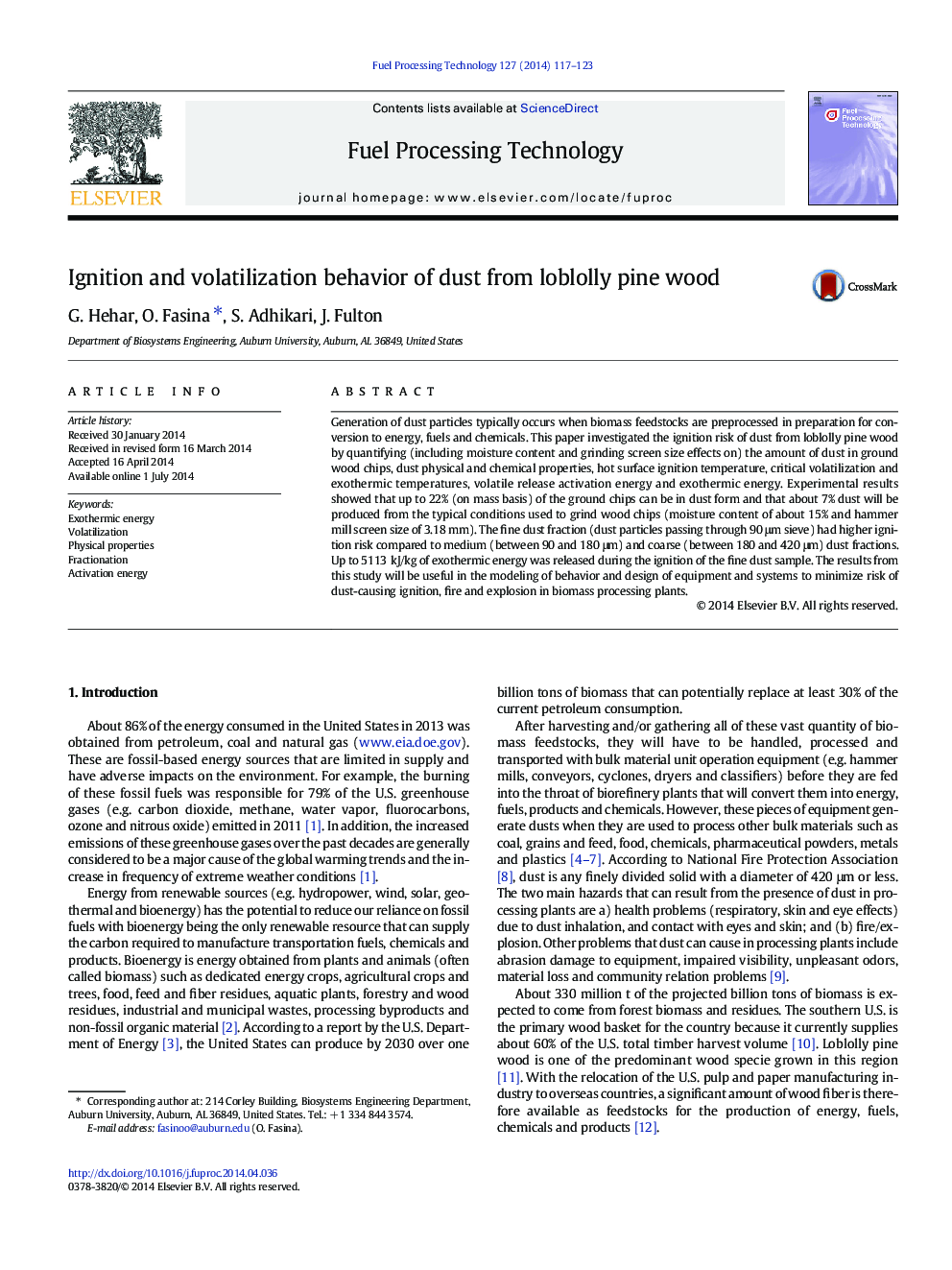| کد مقاله | کد نشریه | سال انتشار | مقاله انگلیسی | نسخه تمام متن |
|---|---|---|---|---|
| 209792 | 461683 | 2014 | 7 صفحه PDF | دانلود رایگان |
• The risks of ignition of dust from loblolly pine wood were quantified in this study. Ash content of dust samples significantly increased with decrease in dust particle size.
• Activation energy due to release of volatiles from pine dust was about 70 kJ/mol.
• Dust can ignite on surfaces that are at temperatures of 292.5oC and above.
• There is substantial release of volatiles and exothermic energy from ignited wood dust samples.
• Separation of dust samples from ground wood chips will reduce ignition risk in processing plants.
Generation of dust particles typically occurs when biomass feedstocks are preprocessed in preparation for conversion to energy, fuels and chemicals. This paper investigated the ignition risk of dust from loblolly pine wood by quantifying (including moisture content and grinding screen size effects on) the amount of dust in ground wood chips, dust physical and chemical properties, hot surface ignition temperature, critical volatilization and exothermic temperatures, volatile release activation energy and exothermic energy. Experimental results showed that up to 22% (on mass basis) of the ground chips can be in dust form and that about 7% dust will be produced from the typical conditions used to grind wood chips (moisture content of about 15% and hammer mill screen size of 3.18 mm). The fine dust fraction (dust particles passing through 90 μm sieve) had higher ignition risk compared to medium (between 90 and 180 μm) and coarse (between 180 and 420 μm) dust fractions. Up to 5113 kJ/kg of exothermic energy was released during the ignition of the fine dust sample. The results from this study will be useful in the modeling of behavior and design of equipment and systems to minimize risk of dust-causing ignition, fire and explosion in biomass processing plants.
Journal: Fuel Processing Technology - Volume 127, November 2014, Pages 117–123
